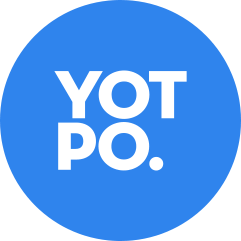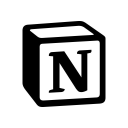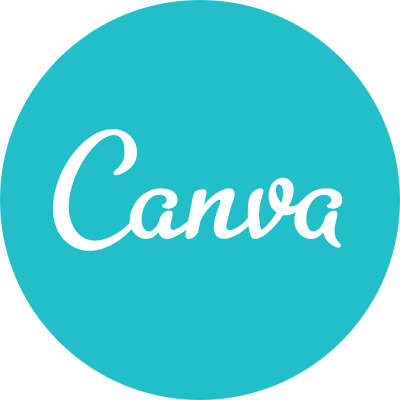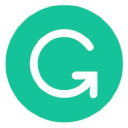How I Started A $20K/Month Business Selling High-Fat, No Crap, Nutritious Snacks
Hello! Who are you and what business did you start?
Hi there, I’m Louisa Mesquita Bakker from Amsterdam, The Netherlands. I’m 26 years old, and last year I launched my food company Funky Fat Foods. Our first product is called KetoCacao, which is a line of low-carb/high-fat chocolate bars. We only use high-quality ingredients to help our customers feel and perform their best. There is no sugar, no soy, no fillers; no crap.
By keeping the ingredients to a minimum, we preserve the quality and nutritional benefits of cacao. Our chocolate bars don’t spike insulin levels and have extra healthy fats from MCTs (medium-chain triglycerides) for more energy and satiation. We believe it’s all about getting long-lasting energy from fat instead of a quick fix from sugar.
We sell our products via our online store and (international) resellers. Our clients vary from active keto/low-carb followers, vegans, diabetics and sports enthusiasts. I’ve launched the MVP in February 2018, we’re now making $20.000 revenue per month, and we're still testing and adapting as we go.

What's your backstory and how did you come up with the idea?
For as long as I can remember, I’ve always been passionate about health, sports, and nutrition. Growing up, my parents owned a health store and were the distributors of mineral water brands from around the world. In our family, talking about health and nutrition is something we do all the time (which can be a little annoying for friends and boyfriends). After I graduated from a Business study program in 2017, I went traveling in South America. One of the many things I did was visit different cacao farms because I just found it so fascinating and wanted to learn more about it.

I was so intrigued by the beauty of cacao and its health benefits. I love dark chocolate but never knew about the tremendous cacao varieties. During this trip, I spent a lot of time reading articles from different doctors in the US who specialize in natural treatments, health, and longevity.
At this time, I was already eating low-carb, but when I came across the ketogenic lifestyle, it was such an eye-opener for me. Before keto, I was constantly having food cravings, feeling bloated, tired, and my hormones were all over the place. I never understood why. I already ate quite “healthy;" a lot of fruit and starchy vegetables while keeping fat to a minimum. I was afraid of eating fat, as they are calorie-dense. Back then I believed this would make me gain weight. Well, now I know better.
I know now that we have a product that is perfect for retail and less perfect for worldwide shipping, which is the complete opposite of the idea I had when starting.
When I first started Keto, I couldn't find an honest high-fat, low carb chocolate bar with MCTs, high cacao content, and simple ingredients. Especially a tasty one. Of course, there’s chocolate made of 100% cacao and nothing else, but the taste is not for everyone because it’s quite bitter. I did some market research and realized it was not just me - there was a huge demand/need for a bar like that in the market. So I thought to myself, “well, let’s just make one!” I had no expertise in chocolate making, let alone starting a business, but I felt I had to take the risk.
Take us through the process of designing, prototyping, and manufacturing your first product.
My process started with market research on what was already out there in terms of low-carb chocolate with natural ingredients. During this research, I learned that if you want your body to absorb all the good nutrients from cacao, like fat, minerals, and antioxidants it should not be mixed with sugar or dairy products. This includes also other natural sweeteners like honey or agave syrup. I didn’t want to use Maltitol (which you’ll find often in bars) because these still spike insulin levels.
Then I came across Erythritol, which is a natural sweetener that has a glycemic index of 0 and doesn’t have a "medical aftertaste" like other sweeteners such as stevia.
At first, my mom joined me in Brazil, and we visited many different chocolate factories. I thought it was important for manufacturing to stay close to the source of the cacao. But even though I’m half Brazilian, there are still a lot of cultural differences to my Dutch roots. I call it the mañana mañana mentality. Not only did I have trouble finding a factory that fit with my style of working, but I also couldn’t find one who had experience in making sugar-free, lactose-free or soy-free chocolate. To top it all off, the MOQs for making the MVP was way too high for me.
So, I went back to Europe and visited almost every chocolate seminars/fairs I could find. That’s where I met an award-winning chocolatier who believed in my idea, but who was also able to produce small quantities at his factory.
I was already adding MCTs to coffee and shakes myself, so I knew I wanted to include this in the bars as well, as it’s such a great energy source. There was no chocolate like that in the market back then, so I spent a lot of my time researching the right ingredients and sourcing them.
I had a small budget, so I had to test the market before producing high quantities. Looking back at this period, I truly believe you have to share your ideas with others cause you never know who can help you.
I personally formulated our first product and worked with the chocolatier to bring it into life. After a lot of testing with flavors, going back and forth from the manufacturer, sharing samples with friends and family, the first formula was approved. It took around three months.

Luckily, I was able to produce a very small batch from a loan I got from my family. This process took another three months. Everything was handmade, and fortunately, I could use existing molds from the factory. The bars were packed in a white flow pack, so at home, together with my mom and friends, I labeled all the packs with stickers (front and back). During this period of R&D, I started working with an intern to get branding and social media-ready before launching. We created an Instagram, a Facebook account, and a landing page to already share the feeling behind the brand and create awareness. It started as a very feminine and a bit rebellious brand. The idea for the business name, Keto Cacao, came quickly as it’s inspired by the Keto lifestyle combined with cacao.

Describe the process of launching the business.
We had our MVP launch at the end of February 2018 at a famous chocolate event in Amsterdam called Chocoa Festival. An event for real chocolate aficionados, which was a great way to receive feedback and sell some bars.
We also started selling the bars via a Shopify site (using a free theme), and I asked my family and friends to help me sell at local fairs.
We sold 12.000 bars in 6 months mainly through organic search and Instagram. Selling at local fairs wasn’t really successful. Most of the time we just got to a break-even point. The whole high-fat, low carb lifestyle is still something quite unknown here in the Netherlands, but the interest is slowly growing.
When launching the MVP online, we received several reviews from customers in the Netherlands and all over the world, as we’re shipping worldwide. Reviews said that KetoCacao really helped with their cravings, surviving long office hours, and so much more.
However, we’ve also received feedback that the taste, packaging, and branding were all things that could be improved. We have this memorable moment where I sent the MVP bars to this lovely famous keto couple called Keto Connect, hoping to receive their honest feedback by email.
Little did I know that their review would be uploaded on their Youtube channel (last year among their 400k subscribers now its doubled). It went viral, but they weren’t impressed with the product. That was quite a bummer, but also very motivating as I’ve always seen this first product as an MVP and the more honest and good feedback we get, the better.
In the end, I want to create the best high-fat snacks. I want people to enjoy their active life eating good food. All the feedback, good and bad, served as extra energy to take back to R&D, improve the product, and, at the same time, rethink the overall strategy. I think being flexible and open to feedback is something that truly helped me along the way.
The evolution of our labels:

The entire "back to R&D" process to improve the taste and texture of the bars and rebuild the brand took longer than expected. I’ve had an “Out of Stock, we’ll be back soon” note on my website for over six months. It was a long period of time, but I needed it to reflect, test new formulas among our early adopters, and have the new designs created for the packaging.
During this period, I also worked as a restaurant hostess and privately taught the Dutch language to expats just to earn some extra money. But after many brainstorming sessions together, my freelancer, my father, and I finally fit it all together. We thought it would be better to change the company name to Funky Fat Foods, as the mission is to motivate, empower and inform as many people as possible to eat more healthy fats and skip the sugars. During this process, my father got more involved in the business regarding our strategic planning and logistics. He’s a nomad and travels all year round, however, we talk almost every day by phone to discuss the business. He’s my go-to person.
Since August this year, we’re back again with a completely new site, new packaging, and new improved flavors. Now I work in the business full time from home. I spend most of my time on product development, customer service, and sales. I learn so much, and every day I feel it’s only getting more serious and finally starting to develop into an actual business. Our main sales channel at the moment is through our (online) resellers. We can’t thank them enough for their trust. Some of our online resellers have been with us since we launched our MVP, so it’s amazing to see their belief in us.
Since launch, what has worked to attract and retain customers?
Although we were not selling for 6 months after our MVP, we still kept our site up to date with blog articles, monthly newsletters, and personal Instagram stories. We’re consumer-focused and take care of our customers as quickly and correctly as possible.
I’ve tried Facebook ads and Instagram ads, although we saw an increase in traffic or likes, there were not many sales. I’m learning more about this at the moment.
I believe what is also working for us, is our customer service and the relationships we have created with them. Even today we see huge support from Instagram, as you can talk directly to your (potential) customers all over the world. Basically, just ask them what kind of content they’re interested in, and always reply to their questions.
We’ve recently started sharing our struggles and learnings via IG stories and see a growth in our engagement. We try to stay in as much contact with our followers as possible and strive to create good and engaging content through social media. As a result, we have been steadily growing our follower base organically.
We also run contests on Instagram in collaboration with other brands and send our bars to micro-influencers, which really help to increase awareness of the brand but there is still a lot of room to grow in this area.
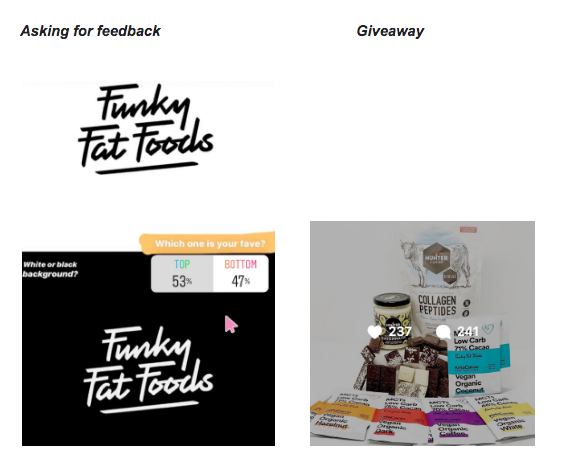
How are you doing today and what does the future look like?
We’re now reaching 20k a month in sales but not yet profitable. Our product costs are high as we’re producing handmade organic chocolate in small quantities, (compared to the big boys). Having an adequate stock is our biggest challenge at the moment, it’s difficult to forecast. New resellers introduce themselves almost every day, and some of them are placing orders for a large part of our stock. The bars have a shelf life of a year (as we don’t use fillers or preservatives) and investing in stock is locking up cash. We experience that the demand is always higher than we can actually supply. I believe once we can get our production on track, our batches and revenue will accelerate so this is my main focus for now.
The goal is to enter organic retail here in Europe and meanwhile create more high-fat snacks. I’m also working on creating more valuable, informative and motivational, content for our social media platforms and our site.
For the future, I hope to find the right distribution partner in the US and Australia as we experience a growing interest there. For myself, I would like to spend more time in creating different high-fat products and empowering people on a personal level via seminars and events.
Through starting the business, have you learned anything particularly helpful or advantageous?
I am very grateful that until now, it has been such a learning experience. When starting, I was quite naive when it comes to working agreements and collaborations. In the end, most of your assumptions will turn out completely wrong, but you will only know this if you go out and do it. I misjudged the logistical part of the business. We have a long lead-time and can experience transport issues during the summer period.
There is always a summer going on somewhere and our chocolate bars above 30 degrees celsius would turn into a chocolate mousse. Delivering or crossing the whole latitude zone between 30 degrees north and 30 degrees south needs cooled/conditioned transport.
Sales via our online shop can be improved. We have the site running on Squarespace and the check-out on Shopify, which doesn’t work in our favor for SEO, so we will be switching this soon to one complete Shopify theme. Also, our high shipping costs cause early checkouts.

As I started selling my MVP right away to resellers, they, of course, wanted a continuous supply of stock. So, take the time to plan your inventory properly.
I’m definitely not there yet as I’m making countless mistakes, but I try to see them as lessons and keep going. I know now that we have a product that is perfect for retail and less perfect for worldwide shipping, which is the complete opposite of the idea I had when starting. It’s a really likable product that consumers love to have in their hands. Though, local (online) resellers can distribute it more cost-efficiently in their territories.
What platform/tools do you use for your business?
Funkyfatfoods.com is run on Shopify, which I think is the best platform for e-commerce business.
As far as other tools I use:
- Notion for product and task Management
- Instagram: our main social media platform
- Linktree: one bio link for Instagram to house all the content
- Grammarly: the digital tool we use for all our written content
- Planoly: Instagram scheduling App
- Hotjar: for user feedback
- Canva: for our graphics on social media
- Linkedin: to connect with B2B clients
- Yuki: (Dutch online accounting App)
- Kickbooster app: for affiliate marketing
- Yotpo for reviews on Shopify
- And we’ll start with Recharge on Shopify soon to offer subscription models
What have been the most influential books, podcasts, or other resources?
Books:
- The Big Fat Surprise by Nina Teicholz A diet book that changed my whole perspective on eating fat.
- Lean Startup by Eric Ries. I’ve read this while in college and implemented the three principles into Funky Fat Foods: Understand the problem, Create an MVP, Experiment and measure.
- This is Marketing by Seth Godin. This gave me a great insight to understand to whom you are selling and the story to tell.
Podcasts:
- The Keto Answers - Dr.Anthony. If you want to know more about the low-carb/keto lifestyle in a fun and informative way.
- Manifestation Babe. I love listening to Kathrin. Her personal story and implementable tips are amazing.
Advice for other entrepreneurs who want to get started or are just starting out?
If you are just starting a business, you may be uncertain about how to proceed. This fear is your ego (the voice in your head) that tries to keep you in your comfort zone. Your ego wants to protect you against the unknown, but that won’t make you grow. This means taking action, and I believe in the well-known quote "learn by doing".
For me, a concept is strong if I immediately feel the passion for a product or service and it adds more value to our lives and if it radiates diversity and dares to be a market leader.
Also when starting, a lot of tasks are ones that you can do yourself, so don’t wait for the perfect moment, the right partners, more money, or a big team to get things going. You can use the Golden Circle from Simon Sinek - Why, how, what. Once you have this clear for yourself, then you can make a step-by-step plan of what you need to start testing, adapting, and growing!
Are you looking to hire for certain positions right now?
I’m always on the lookout for talented people (we also work with people who work remotely) who have a passion for health and want to be part of this journey to make it a success.
Where can we go to learn more?
If you have any questions or comments, drop a comment below!

Download the report and join our email newsletter packed with business ideas and money-making opportunities, backed by real-life case studies.

Download the report and join our email newsletter packed with business ideas and money-making opportunities, backed by real-life case studies.

Download the report and join our email newsletter packed with business ideas and money-making opportunities, backed by real-life case studies.

Download the report and join our email newsletter packed with business ideas and money-making opportunities, backed by real-life case studies.

Download the report and join our email newsletter packed with business ideas and money-making opportunities, backed by real-life case studies.

Download the report and join our email newsletter packed with business ideas and money-making opportunities, backed by real-life case studies.

Download the report and join our email newsletter packed with business ideas and money-making opportunities, backed by real-life case studies.

Download the report and join our email newsletter packed with business ideas and money-making opportunities, backed by real-life case studies.


